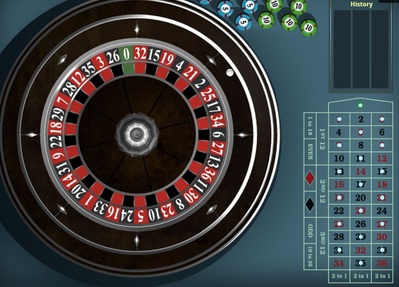 Anyone looking for an optimal strategy for playing roulette may well begin to consider how many numbers to bet on each spin.
Anyone looking for an optimal strategy for playing roulette may well begin to consider how many numbers to bet on each spin.
After all, the more numbers you have covered the greater the chance that one of your bets will win.
While this is true, it does not take into account the fact that, if you bet on a lot of single numbers, your cost per spin will be going up too.
What’s more, there is no way to cover all of the numbers and still make a profit, because there are 37 numbers on a European roulette wheel, and the payout for a single win is only 35:1. This means you can only bet a maximum of 34 numbers and still make a (small) profit, but the bet would leave 3 numbers uncovered, so the risk of losing everything is still there.
But is there a happy medium somewhere, a certain set of numbers that strikes a nice balance between risk and reward?
Let’s explore what’s involved here.
Number of Bets vs Table Coverage
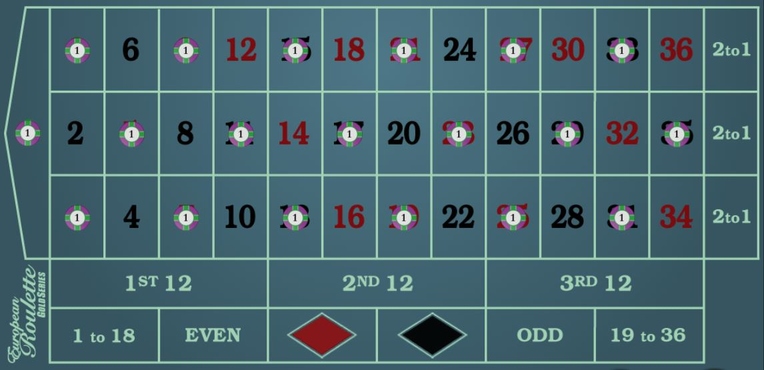
First of all, it’s important to know the difference between the number of bets you make and your table coverage.
Making more bets does not necessarily give you more coverage.
For example, a bet on red would give you table coverage of approximately 48.6% from that single bet, whereas covering 5 individual numbers would give you coverage of just 13.5% but cost you 5 bets.
| Cost Per Spin | Table Coverage | Potential Payout | Potential Profit Per Spin |
|---|---|---|---|
| 5 Units | 13.5% | 35:1 | 31 Units |
| 1 Unit | 48.60% | 1:1 | 1 Unit |
In this example, you would be spending 5 times more to cover hardly any of the board but your potential rewards on each spin would be much higher.
If coverage is what you are going for then, it makes a lot more sense to place outside bets and cover the table as cheaply as possible.
Of course, outside bets have smaller payouts, so you are unlikely to win vast sums of money doing this, but you do get the table coverage and longevity of play.
Anyone looking for big wins would therefore do better to cover less of the wheel using inside bets in favour of keeping their costs down per spin but maximising potential payouts.
This way, assuming they get lucky, the few wins that do come in will pay out a great deal more and hopefully recoup any losses and still leave them in profit.
Wins vs Profit
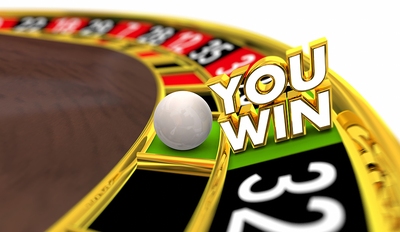 Another thing to understand is that lots of wins don’t necessarily mean that you will walk away with more money in your pocket.
Another thing to understand is that lots of wins don’t necessarily mean that you will walk away with more money in your pocket.
If you were betting on 30 single numbers each spin, then chances are you would win fairly frequently. However, only 1 of those 30 bets would be winning each time, meaning that 29 of them would lose, so your 35:1 payout would actually leave you just 6 betting units richer:
- 35 – 29 = 6
On top of this, you would still have 7 numbers left uncovered, so you could statistically expect to lose everything roughly 18.9% of the time.
It would take 5 wins in a row to claw back the 30 betting units lost on a dead spin, so making any progress financially would be difficult unless you got very lucky early on, as you would need to achieve a win/lose ratio of 6 to 1 to make money.
Even if this played out statistically, you would only be 6 betting units better off after every 7 spins.
Equally, placing lots of outside bets would likely see a high win/lose ratio, but at odds of a little under 48.60% your wins and losses would be more likely to either even themselves out or leave you slightly down, thanks to the low payout ratio of 1:1 and the house edge of 2.70%. Plus, the longer you played, the more that house edge would chip away at you.
To take it to an extreme you could place 37 single bets on every spin, covering 100% of the table and guaranteeing a win on every spin. With a payout of 35:1, however, each spin would lose you 1 betting unit as your return would be smaller than the total amount bet.
So wins don’t always equal profit, even though they feel good.
Betting Few or Many: The Choice is Yours
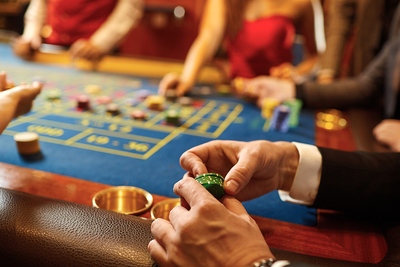
Rather annoyingly for anyone reading this who wants a definitive answer to the titular question, there isn’t one.
You can choose an approach or strategy and pick how many numbers to bet on (and what sort of bets to use in order to do that) to make that strategy work, but ultimately, there is a huge amount of luck involved.
A sensible person would see this more as a question of how quickly they want to lose their money. Obviously though, we all hope luck will intervene in the short term and get us ahead.
A more cautious player with a smaller bankroll might go for outside bets and hope to slowly build their bank over time by amassing more small wins than small losses; the odds are against this happening but that doesn’t mean it isn’t possible.
A player who is happy to take more risks might instead choose to cover a small number of single numbers and hope to get a few wins early on in the game before they have lost too much, then walk away with a healthy profit from the higher payouts before their luck turns.
It isn’t possible to give you every bet combination because they are endless – you could mix inside and outside bets in all sorts of different ways, and play with stake sizes too – but just know that the house will always have their 2.70% edge no matter what you do.
They key is to win your money and run, however you achieve it.
Advantage Play
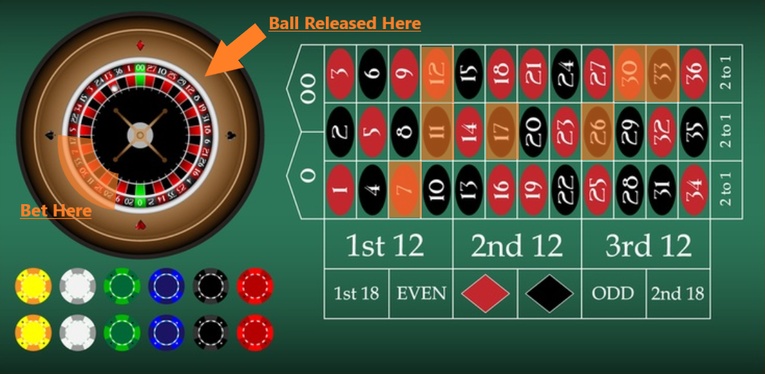
Wheel bias is a known way to exploit a roulette wheel, although it is incredibly difficult for the average Joe to spot and even more difficult for them to successfully exploit. You can read about Gonzalo Garcia Pelayo, one of the most successful players to exploit wheel bias here, but essentially you would see the ball favouring a certain pocket or area of the wheel and bet there.
Even without wheel bias though, players try to spot patterns and bet accordingly.
What a lot of people do is watch a dealer for a while until they think they have figured out a loose pattern to their results: for example, perhaps a specific dealer tends to release the ball in such a way that it often lands on the opposite side of the wheel to the side it was on when it was released. See the image above.
They would then try and cover the numbers in the sector of the wheel in which they feel the ball is most likely to land; so it’s about betting on a specific area rather than a particular set of numbers.
This is not fool proof though, and many gamblers see patterns where none exist, so most still lose even if they think they have the dealer’s style all worked out.
